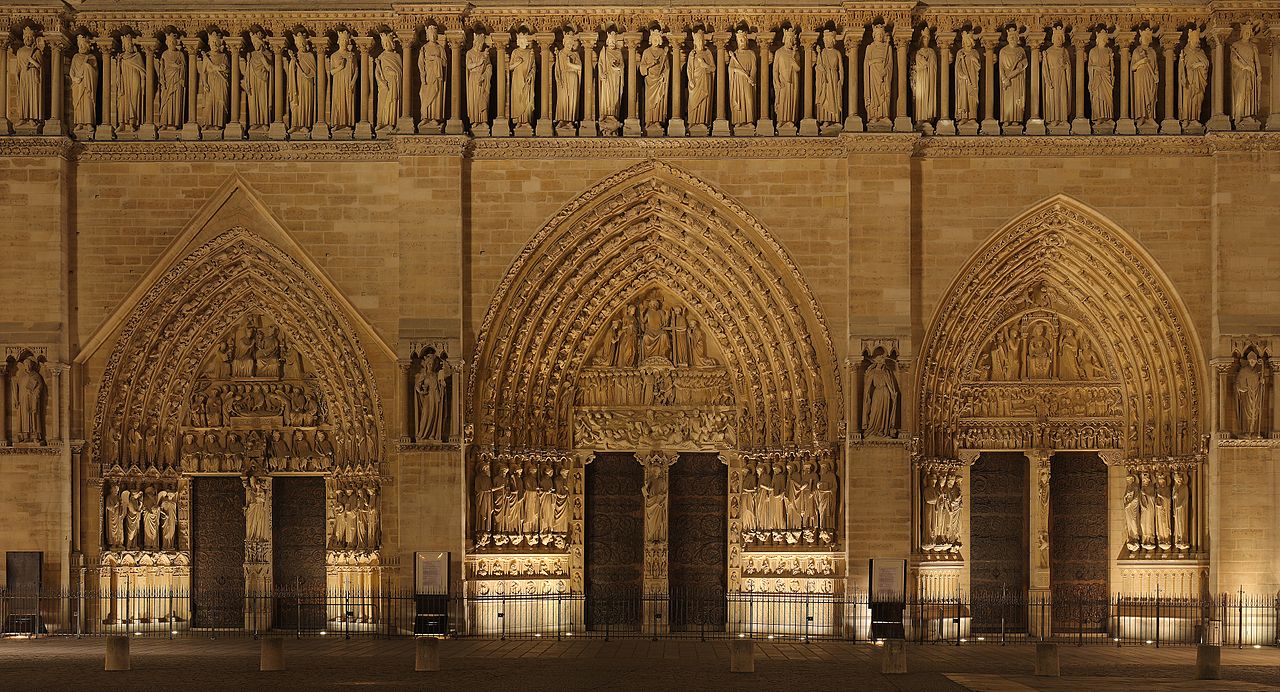
[Credit: osc-vector.com]
The actual laser modeling is done by mounting a laser from a tripod and shooting the gallery, taking time to measure the distance between the scanner and every point it hits. Each one of these points represents a distance — by mapping millions of points from a single location, historians can measure how the building expands and contracts during the day, as well as how it shifts over longer periods of time. By combining the point cloud data generated by the laser scanner with on-site photographs taken at the same time, Tallon has created extremely accurate models of the underlying structure and design of the cathedral, and identified points where the cathedral’s masons either deviated from the original plan or paused work to allow the ground to settle.

of the church [Credit: Andrew Tallon/Vassar College]
Tallon’s research, for example, has found that the Gallery of Kings — the massive, three-doorway facade that dominates one side of the cathedral, had shifted almost a foot out of plumb. Researchers had previously suspected that work had stopped on the area for up to a decade, and this new work suggests why that might have occurred. The masons, realizing that the building was shifting in the thin, sandy soil, halted progress to give the ground time to settle and resumed a decade later.

Notre-Dame Cathedral don’t line up because they were built around
existing structures [Credit: Andrew Tallon]
Other findings from Tallon’s work include data that shows the internal columns of Notre Dame don’t align perfectly, and that workers likely incorporated existing structures in the area as part of the cathedral rather than tearing them out altogether. The flying buttresses, which were often thought to be a later addition to the architecture, were likely installed from the very beginning to counterbalance the effect of the vaulted ceilings (which tended to force the walls outward). External support from flying buttresses would push the walls inward, counterbalancing the vaults. The walls of Notre Dame have scarcely moved since they were constructed — a testament to the exquisitely balanced and counterbalanced supports.

[Credit: Benh Lieu Song/Flickr]
National Geographic has a full update on the process and technology used to create the laser point models and a discussion of the work done at Notre Dame and other Cathedrals. Laser and LIDAR-assisted mapping has become more prominent in recent years, thanks to its ability to show us where long-buried structures or archaeological remains may still exist. Thermal maps and subtle gradation variations can also show remnants of mankind’s activity in an area, even when shifting sands or jungle terrain has obscured the more obvious visual reminders. Human buildings and structures absorb heat differently than surrounding terrain even when buried, which gives us a window into the past when conventional methods or other records come up short.
Author: Joel Hruska | Source: Extreme Tech [June 24, 2015]